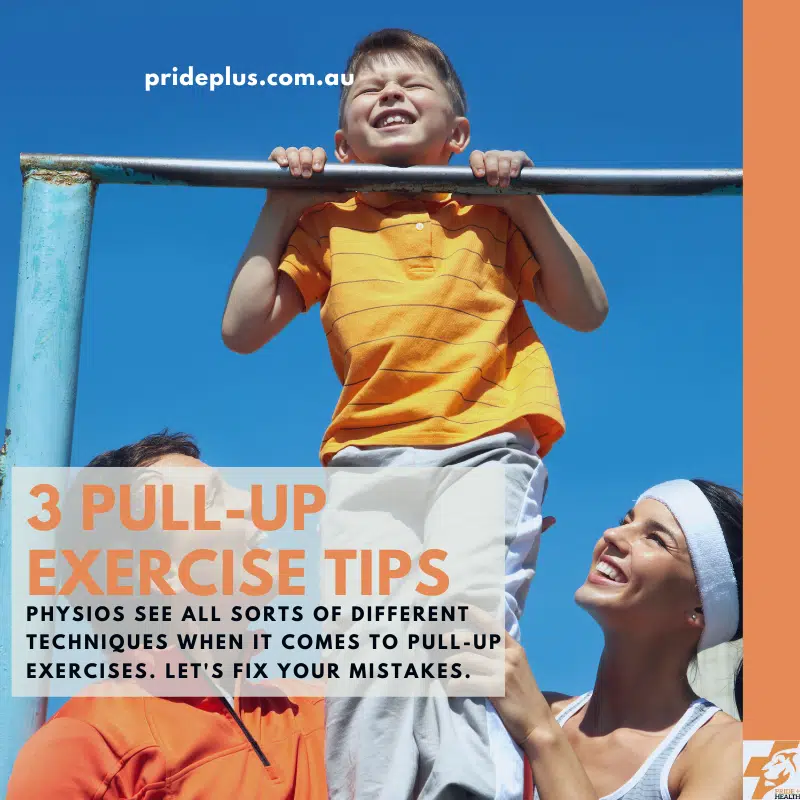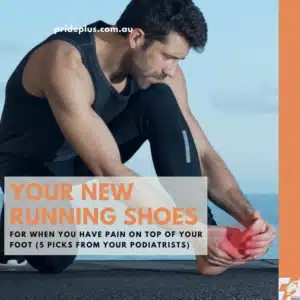There are 3 common exercise errors or what I think of as pull-up mistakes that us physiotherapists see a lot of in clinic.
And fair enough, pull-ups are one of the most challenging workout moves, requiring a lot of strength and practice (and patience).
As one of your Pascoe Vale physiotherapists, I’ve helped numerous clients master push-ups and facilitate their return to them after an injury.
Here are 3 common pull-up mistakes that people make and how to fix them.
Key Points
- Lack of grip strength can derail your pull-up exercise
- Build up your upper body strength with floor pull-up exercises
- Variety is the spice of pull-up exercise life
Pull-Up Mistakes #1: Weak Grip
A weak grip can limit your ability to hold the bar properly despite having well-developed upper body strength.
High muscle forces are maintained over large range of motion in pull-ups, this makes the weak links in your body more obvious.
For most people, the weak link tends to be their grip. The hand and forearm muscles do not gain muscle mass and build up over time like the glutes, quads, biceps etc. Therefore strengthening your grip will improve your pull-up performance.
As a bonus, a firmer grip equates to stronger forearm muscles which are less likely to be injured during a pull-up.
Pull Up Mistakes #2: Skipping Important Build-Up Exercises

Another mistake is to progress from basic shoulder exercises using resistance bands and dumbbells to pull-ups directly.
Pull-ups are bodyweight exercises, they are also Closed Kinetic Chain (CKC) and Eccentric movements.
In CKC exercises, the limb (hand on the bar) remains fixed while the body moves. Conversely in Open Kinetic Chain (OKC) exercises, the body is fixed while the limb moves. The eccentric contraction during a pull-up is the “braking” action as you slowly lower your body, whilst maintaining tension over the muscle.
Here is one such CKC exercise, the FLOOR PULL-UP. It is a handy progression from OKC exercises and when you are not yet strong enough to get on to the pull-up bar.
The pull-up resistance training workout that you can do at home!
- Position yourself on the ground, feet slightly off to reduce friction.
- You can use a towel under the belly to make this move easier.
- Place your hands ahead of you slightly wider than your shoulders.
- Exhale and pull your shoulder blades together to start the movement, pulling your body forward by pulling through your hand.
- Inhale and push through your hands, returning to the start position.
Pull-Up Mistakes #3: A Lack of Variation
There are 3 common pull-up variations.
- Classic pull-up: shoulder-width apart, palms facing away from your body
- Classic chin-up: shoulder-width apart, palms facing towards your face
- Wide grip: classic pull-up but with hands placed far apart from each other
While the chin-up is more of a chest and arms workout, the pull-up favours the back muscles. Wider the grip, the stronger the lats and lower trapezius workout.
Include all 3 variants and rotate through them to provide for greater global strengthening of the torso and the upper limb.
Which pull-up variants should you avoid when you have injured your shoulder?
Pull-ups are associated with shoulder injuries such as subacromial Impingement, tendinopathies and rotator cuff tears.
The chances of shoulder impingement increase with a wide grip due to relatively less shoulder blade protraction/retraction.
Classic chin-ups produce large shoulder rotational moments, requiring higher rotator cuff activation. Therefore it is prudent to avoid chin-ups during the rehabilitation of rotator cuff injuries, instead use a wide grip to emphasise the latissimus and the back muscles.
About The Author

Pascoe Vale physiotherapist Naveena has seen her fair share of shoulder injuries. With her years of experience and APA titling as a musculoskeletal physiotherapist you can be confident Naveena will be able to guide you away from any pull-up mistakes you might be making and on to your goals.




